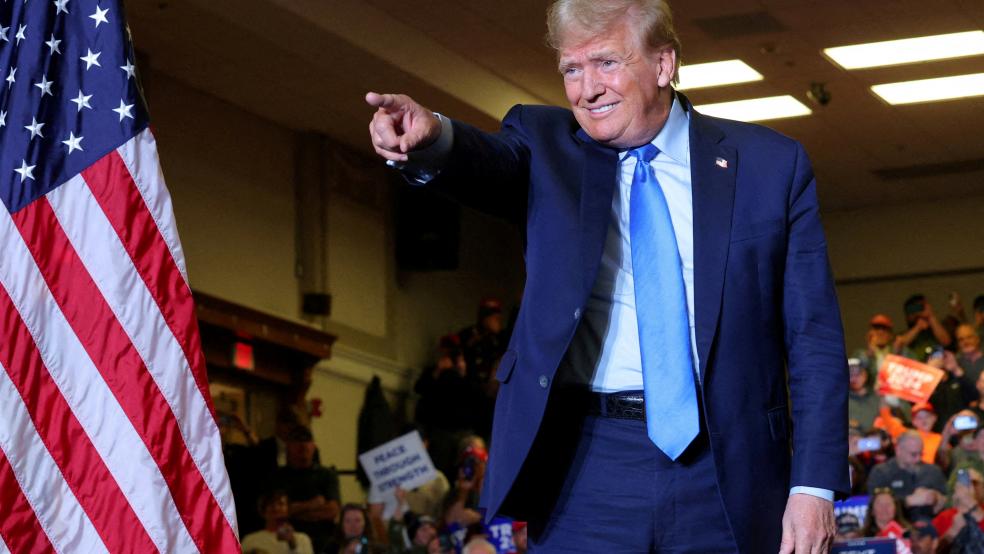An array of tax and spending proposals put forth by former President Donald Trump would raise the federal budget deficit by more than $4 trillion over the next 10 years, according to an analysis by the Penn Wharton Budget Model.
The Trump proposals were scored on both a static and dynamic basis, with the latter approach incorporating feedback loops from policy to the economy to tax revenues. On a conventional static basis, the Penn Wharton analysts estimated the 10-year cost of Trump’s proposals to be $5.8 trillion, while on a dynamic basis, the cost was estimated to be $4.1 trillion.
Here’s a breakdown, with costs provided on a static basis:
* Extending the individual tax cuts from the TCJA: Trump has vowed to extend the individual tax cuts from the 2017 Tax Cuts and Jobs Act, which are currently set to expire at the end of 2025. Doing so would cost an estimated $3.3 trillion between 2025 and 2034.
* Eliminating taxes on Social Security benefits: Trump has called for eliminating taxes on Social Security benefits, and the analysts found that doing so would cost $1.2 trillion over the next 10 years.
* Extending business tax provisions from the TCJA: Trump wants to restore more generous tax benefits for businesses, including deductions for corporate research and development costs. Doing so would cost an estimated $623 billion over 10 years.
* Lower the corporate tax rate: Trump has indicated that he wants to lower the corporate income tax rate from its current level of 21% and has raised the possibility that it could go as low as 15%. A reduction to that level would cost $595 billion over a decade.
The Penn Wharton analysts did not score Trump’s proposal to eliminate taxes on tipped income, because it involves too many unknowns at this point. “The 10-year budget cost could vary significantly depending on the ability to reclassify current sources of income as ‘tips’ to the mutual benefit of employers and employees,” the analysts wrote. “The ability to reclassify income is often a major source of revenue response in conventional tax scoring. As such, a considerable number of additional details would be needed to score this provision.”
The analysts did, however, provide a sense of who would benefit from Trump’s tax and spending proposals. While every income group would gain, some would do so more than others. The biggest winners would be very rich, with the top 1% taking home an additional $47,515 by 2034, and the top 0.1% gaining $214,935. Those in the bottom 20% of the income distribution, by comparison, would see an additional $465.
Taxes
Trump Economic Plans Would Cost More Than $4 Trillion: Analysis

Reuters/Brian Snyder



